Chinese Kung fu basketball 中国的“功夫”篮球
 陈凯博客: www.kaichenblog.blogspot.com 陈凯一语 Kai Chen's Words: 中共党朝的不择手段、非理出牌的心态与行为被八一男篮群殴美大学队清晰地暴露在人们的眼前。 正如冲突开始时的场上比分显示“64:64”,当六四天安门大屠杀凸显出来的时候,自由与专制的较量就会开始。 中国大陆没有自由,美中的关系是绝不会正常化的。 篮球场上的冲突只是一个即将到来的自由与专制较量的象征性开始。 Using end to justify means, winning/preserving China's communist party-dynasty's interests at all cost was manifested by the brawl between the Georgetown "Hoyas" basketball team and the Chinese military "August 1st Team" (the team of which I was a player/officer for six years). Maybe the score 64:64 when the brawl began hints something deeper since "64" is a taboo figure in China banned by the government online. (June 4, 1989 was when Tiananmen Square Massacre happened.) The symbolism is that June 4 has been, is and will always be a central issue when the US interacts with China. The underline moral issues cannot be overlooked and ignored when the US is dealing with China's party-dynasty. When the figure "64" is reached, it can never be "business as usual". ----------------------------------------------------------- What a Basketball Brawl Tells Us about the PRC 篮球场暴虐揭示当代中国 Posted by Alan W. Dowd Bio ↓ on Aug 22nd, 2011 Sometimes a little event can be a metaphor for something big. What recently happened on a basketball court in Beijing is a case in point. The Georgetown University men’s basketball team, in the middle of a goodwill tour of China, was playing a Chinese Basketball Association team known as the Bayi Military Rockets—“military” as in the entire team is drawn from the ranks of the People’s Liberation Army (PLA). As the Washington Post reports, the game “deteriorated into a benches-clearing melee in which players exchanged blows, chairs were thrown and spectators tossed full water bottles at Hoyas players and coaches as they headed to the locker room.” Chinese players and coaches threw chairs. “Chinese authorities made no attempt to break up any of the fights, and the three officials working the game could not be seen as the melee erupted,” the Post adds. To avoid a full-blown riot, Georgetown coaches pulled their team off the court. They requested but never received a police escort for the team, alumni and fans in attendance. So Georgetown coach John Thompson III made an executive decision and convinced the entire Georgetown contingent to walk together to the relative safety of the buses. The fight was triggered by what Chinese and American observers alike agree was rough play by the Chinese team, which was exacerbated by one-sided officiating. Again, American and Chinese observers alike describe the officiating as embarrassingly biased. “It seemed that [the referee] was eager for the Chinese team win tonight,” one Chinese fan told the Post. “The Chinese players provoked the conflict,” said another Chinese fan. How one-sided was the officiating? The PLA team had 11 fouls, Georgetown 28—at halftime. All told, there were 57 free throws taken by the PLA team, 15 by Georgetown. So what does this have to do with the bigger geopolitical picture? More than you might think. I. China doesn’t play by the rules and doesn’t respect international norms of behavior. The examples are legion. On the human-rights front, an estimated 4-6 million people are rotting away in China’s laogai camps, many of them “guilty” of political dissent or religious activities. In preparation for the Olympics, the PRC opened fire on peasants protesting land confiscations in Dongzhou, forcibly evicted thousands around Beijing, bulldozed churches in Shaanxi Province, battered nuns who got in the way, raided house churches, cordoned off entire villages to arrest pastors and smothered Tibet. Outside China’s borders, Beijing demands that other nations observe its 200-mile exclusive economic zone (EEZ) as sovereign Chinese territory, yet China refuses to respect the EEZs of other nations. Just ask Vietnam, Japan and the Philippines. II. China wants to bully its neighbors into pliant submission and to bluster the U.S. out of the region—pr off the court as it were. Unchecked by internal dissent or the constraints of conscience, Beijing wants to be the dominant force in its neighborhood and is developing naval, air and space assets to attain that objective. And the U.S. military is standing in the PRC’s way—for now. As the U.S. focused on the Middle East, China’s military budget grew by nearly 10 times in the 1990s and early 2000s. As the U.S. scaled back militarily, China’s military budget roughly doubled between 2005 and 2009. And as the United States begins to slash military spending, China’s military budget is growing at a 14-percent clip annually. The result: new warplanes, new missiles and a brand-new navy capable of projecting power anywhere on earth. China has secured a number of coastal footholds, from the South China Sea to Burma to Sri Lanka to Pakistan, where China is investing in a deep-sea port near the entrance to the Persian Gulf. The U.S.-China Economic and Security Review Commission recently noted, as a result of naval modernization, that “China increasingly will be able to project power in East Asia and therefore interfere with U.S. freedom of access to the region.” That’s no small matter, given that the United States has dominated the Pacific since the end of World War II. Make no mistake: Coach Thompson did the right by pulling his players off the court. The Hoyas were supposed to be China’s guests, supposed to be learning about Chinese culture, supposed to be playing basketball. They were not sent to fight or make political statements. That’s not a college basketball team’s responsibility. But the U.S. Navy has different responsibilities. The next time China rams a Vietnamese fishing trawler, throws a tantrum in the Taiwan Straits, seizes a Philippine atoll, or mugs an unarmed U.S. ship or plane, Beijing may need to be reminded that it is not the biggest, baddest kid on the block. III. The Chinese people may not share their government’s views or approve of their government’s tactics. When the Chinese people see events with their own eyes—as during the Georgetown-PLA game—they make honest, reasonable decisions. But the sad reality is that they are seldom allowed to see events with their own eyes or to make decisions based on the truth. The Post reports that “prominent Chinese Web sites…posted stories” about the brawl, but “government censors shortly thereafter took them down.” As hundreds of courageous Chinese citizens declared in “Charter 08”—a reference to “Charter 77,” which freedom-minded Czechoslovakians released in 1977 to challenge their communist rulers—the PRC is an “authoritarian power” that controls its subjects and limits freedom. “Without freedom,” they concluded, “China will always remain far from civilized ideals.” And China’s neighbors will remain under threat. IV. There is strength in numbers. When he realized that there was no one to protect the Georgetown contingent, Coach Thompson decided the best thing to do was for everyone to stick together. What was true for the Hoya faithful is true for China’s neighbors. Some of America’s strongest friendships are found in the vast Asia-Pacific region: Japan, South Korea, Thailand, Singapore, Australia. Two decades ago, the Philippines sent America packing. Today, it’s asking for greater, deeper collaboration with America. Likewise, during the Cold War, India overtly opposed the U.S. Today, the United States and India are closely collaborating on a range of security issues. In 2010, the U.S.-led RIMPAC exercises enfolded naval and air forces from 14 nations in the Asia-Pacific region. With the carrier USS Ronald Reagan serving as the nerve center, 34 warships and hundreds of aircraft participated in what Vice Admiral Richard Hunt called “the largest RIMPAC that we’ve had.” Ever. In 2011, the U.S. will lead a total of 18 major exercises involving 27 nations in the region. In short, it seems China’s bellicose behavior has forced much of the Asia-Pacific region into closer ties with the United States. The result is the emergence of an ad hoc, region-wide hedge against Beijing. V. China embraces asymmetric warfare. China’s leaders have studied and applied the lessons of the great Chinese warrior Sun Tzu, who counseled in The Art of War: “Attack your enemy where he is unprepared…Make for the enemy’s weak points…Appear where you are not expected…Only attack places which are undefended.” In the game against Georgetown, as in geopolitics, the PRC seeks mismatches. Note that it was a team of professional army players against college amateurs, grown men versus kids. That helped tilt the playing field in China’s favor. In the same way, China is trying to tilt the regional balance of power in its favor by intimidating its neighbors, deploying anti-access/area-denial weaponry, and stockpiling missilery that can kill U.S. carriers and frighten Taiwan into submission. Moreover, once the Chinese realized they couldn’t beat Georgetown playing by the rules, they decided to turn the game into something else. In other words, Beijing seeks to manipulate the rules to favor itself (consider its support for treaties that would limit U.S. freedom of action in space or at sea, thus increasing China’s own range of action) and then abandons the rules when it serves its interests (see the EEZ example above). And Beijing has no compunction whatsoever in conducting the most modern form of asymmetric warfare: cyber-war. The U.S.-China Economic and Security Review Commission reports that Chinese hackers have penetrated computer systems at U.S. defense firms, the White House, State Department and NASA; and attacked government ministries in Europe, Japan, India, Taiwan, South Korea and Australia. In short, China is attacking what’s undefended and striking where we are unprepared. If real war ever comes, it will likely be as unexpected to U.S. policymakers as the brawl was to Georgetown’s basketball team. Alan W. Dowd writes on defense and security issues. |






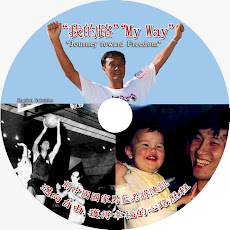







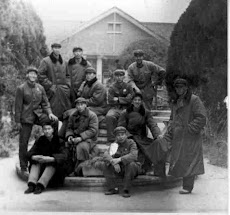


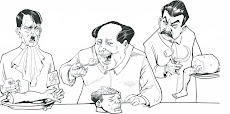
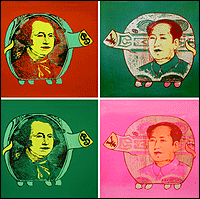
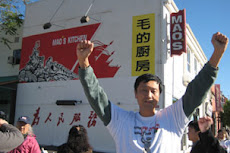


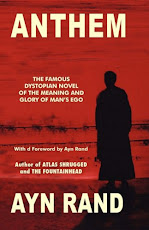










No comments:
Post a Comment